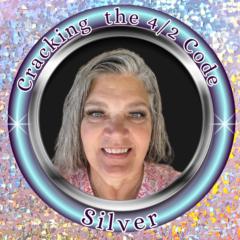Jan 11 • 💬 General discussion 💬
FREE Lead Magnets
A lead magnet is something valuable you offer for free to potential customers in exchange for their contact information, like an email address. It could be a helpful guide, a checklist, a discount, or a free trial. The goal is to attract people who are interested in what you offer, so you can stay in touch with them, build trust, and eventually turn them into paying customers.
The below steps are how you would optimise using a Lead Magnet.
1. Awareness Stage: Attracting Potential Leads
- Lead Magnet Creation: Develop a valuable lead magnet (e.g., e-book, checklist, webinar).
- Landing Page: Create a landing page explaining the lead magnet and its benefits. Include a form to collect the visitor’s email address.
- Promotion: Promote your lead magnet through social media, blog posts, ads, or partnerships to drive traffic to the landing page.
Customer Journey: Potential customers come across your lead magnet through ads, social media, or referrals and are intrigued enough to visit your landing page.
2. Opt-In Stage: Collecting Contact Information
- Opt-In Form: On the landing page, visitors enter their email to receive the lead magnet. Upon submission, they’re added to your email list.
- Confirmation Page: Direct them to a confirmation page thanking them for subscribing and reminding them to check their email for the lead magnet.
Customer Journey: They feel rewarded immediately after signing up, reinforcing trust in your brand and motivating them to check their email.
3. Welcome Email Sequence:
Nurturing the Relationship
- Email #1 – Immediate Welcome & DeliverySend the lead magnet immediately with a thank-you message. Briefly introduce yourself or your business to begin building a relationship.
- Email #2 – Value & Education(1-2 days later)Share additional helpful content related to the lead magnet, like a blog post or a quick tip, to provide more value.
- Email #3 – Social Proof(3-4 days later)Share testimonials, case studies, or success stories to show how others benefited from your product/service.
- Email #4 – Problem & Solution(5-6 days later)Address a common problem your product/service solves, positioning it as a solution.
Customer Journey: The customer feels valued and supported. They learn more about your brand and start seeing you as an expert in your field.
4. Conversion Stage:
Encouraging Action
- Email #5 – Introduction to Your Product/Service(7 days later)Share the main benefits of your product or service, tying it to their needs and the lead magnet’s topic.
- Email #6 – Special Offer or Call to Action(8-10 days later)Offer a limited-time discount, bonus, or incentive to encourage them to purchase or sign up for a demo.
- Email #7 – Reminder(11-12 days later)Send a friendly reminder about the offer’s end, emphasizing the value and benefits.
Customer Journey: The customer is well-informed, trusts your brand, and sees value in your product/service, making them more likely to take the next step.
5. Follow-Up & Retention Stage:
Building Loyalty
- Email #8 – Post-Purchase or Post-Signup Thank You After they convert, send a thank-you email, along with any tips or resources to help them get the most from their purchase.
- Email #9 – Continuous Value & Engagement Send regular updates, new tips, or content relevant to their interests to keep them engaged.
- Email #10 – Upsell or Cross-Sell After some time, introduce them to related products or services that complement their initial purchase.
Customer Journey: They feel appreciated post-purchase and continue to see value, keeping them engaged with your brand for future purchases.
This funnel allows you to capture, nurture, and convert leads effectively while maintaining a long-term relationship through email marketing.
17
7 comments

skool.com/earnwithskool
Learn how to grow loyal fans without taking your clothes off. Build & monetize your online presence.
Powered by





